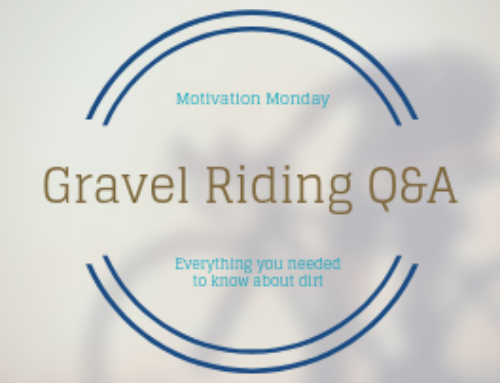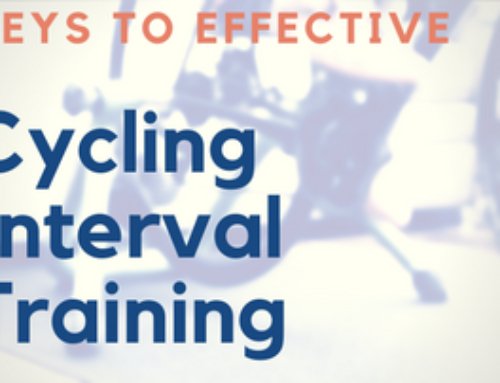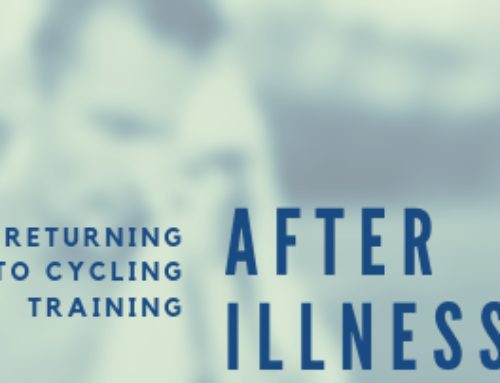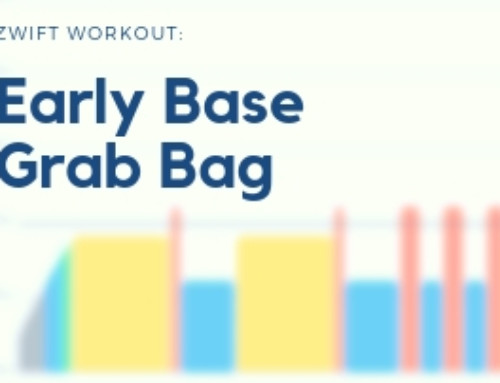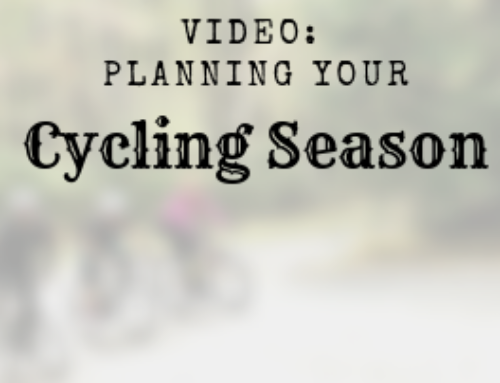Have you ever wanted to train like a pro? I know a lot of cyclists read about professional training camps and get a little bit jealous. They travel to far away places and spend weeks riding together, training and bonding. But if you're not a pro, a cycling training camp is out of reach, right?
Wrong!
You can build your own cycling training camp. All you need it a little planning and a little structure to ensure you execute everything properly. You don't even have to travel if you don't want to: you can hold a training camp in your own backyard. Of course, having a place to “get away to” for your camp can make all that riding a little easier. You can choose any place you want to hold your training camp, as long as you follow a couple of simple guidelines when you put it together.
Are you psyched to build some big fitness and feel like a pro? Then click through the jump and learn more about how to plan and execute your very own cycling training camp.
Podcast: Play in new window | Download (Duration: 44:15 — 33.6MB)
What is a “cycling training camp?”
Many of you have probably heard of the concept of “team training camp” when reading about professional cyclists. These camps are often a way for teammates to bond with each other and get acquainted. If you're not racing on a team, a cycling training camp may simply be a way to get a lot of training stress in a short time. This short, high volume amount of work can give you a big boost to your fitness if you do it right. But there are a lot of ways to do it wrong, too.
Let's take a look at what you need to know in order to execute the perfect cycling training camp:
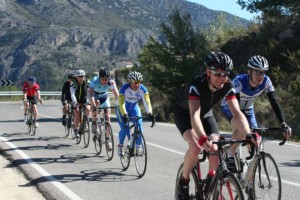 Training camp basics
Training camp basics
There's one basic reason for a training camp: DO WORK! No, not like sitting on your computer and emailing the office. I'm talking about good old-fashioned time on your bike. The more intensity you put in, the higher the spike in fitness you'll see when the camp is over. If you want to make the most of your time, there's a couple of concepts you'll need to take note of:
Maximize training stimulus
Since the goal of a training camp is to heavily overload your body with training stimulus, you'll want to get as much training stress as possible. There are a couple ways to pack in the training stress, each with its own benefits and side effects. In general, expect to add an additional 50 to 100% of your normal training stress for that given time. For example, if you put in 400 TSS/week, expect 600-800 TSS during a training camp of similar duration.
Maximizing intensity is a great way to get a lot of work done in a short period of time. This is really important when you're doing a camp in the cold or when daylight limits you. It's also an important metric to track and ensure you don't burn out too badly by the end of the camp.
Intensity is base metric along with volume. You have to work towards balancing the two during the camp. If you try to increase both without thought, you'll end up severely overreaching. So basically, the harder the efforts, the shorter the training will be. The easier the efforts, the longer the efforts can be. Balancing the two is key to have more effective training (more on that below.) Overall, the more intensity you put in, the shorter the efforts will be, the more time you'll have to recover. The more time you have to recover, the more likely you'll be able to make it through to the end of the camp.
During your training camp, spend some time with the basics of high-intensity training. Work on VO2 max efforts (3-8 minutes at VO2), high-intensity skills like sprints, race winners and things like Tabata intervals or 1-minute drills (see my Zwift minute man workout for a perfect example of 1-minute drills.)
Maximizing volume is another factor to consider in designing your cycling training camp. While it's true that the “key” to a successful training camp is training stress volume, you want to avoid so much training stress that your body takes weeks to recover from it.
In broad physiological terms, you need a volume of training to stimulate aerobic improvements. In order to build fitness, you need a certain amount of volume. If you were to go to the gym once, you won't get any measurable strength gains. You have to go and lift regularly if you want to get stronger. Riding is no different, and your cycling training camp should focus on volume as well as intensity. As mentioned previously, TSS volume should increase by 50-100% overall, but you should add plenty of lower intensity volume on top of the high-intensity work you build in.
In order to build significant volume in your cycling training camp, plan out significant amounts of FTP intervals, sweetspot training, and endurance work. FTP intervals can be blocked any way you like. Generally, in the early season, you'll want shorter FTP blocks, but shoot for 40 minutes to an hour per session. Sweetspot training is much easier, and you can build up an hour plus without any detrimental effects. Endurance work is the perfect filler in between all the rest of your intervals, and you can spend boatloads of time at endurance pace.
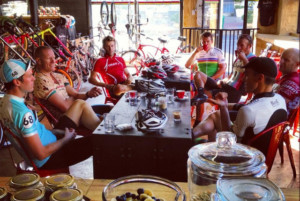 Prioritize Recovery
Prioritize Recovery
As I've talked about in the past, recovery is the key to getting stronger. Fitness gains don't happen when you stress your body, they happen when you recover from that stress and your body builds itself stronger to handle similar strains in the future.
Recover like you train because, as I mentioned, recovery is where gains happen. That means you have to recover like you train. If you're spending a ton of time dumping training stress on your body, you need to spend similar amounts of time on recovery.
You need to recover just like you train, and that means hard. Nobody would take their training lightly when they've got a big goal coming up. Taking your recovery lightly will put you in a similar hole. So to combat this, build recovery time into your training camp, just like you build in interval time. If you spend a couple of hours on the bike, expect to spend a similar amount of time, if not more, actively recovering from those intervals. Make sure to include low-intensity time to help your body flush out metabolic wastes and take some time to put your feet up and rest.
Depending on the length of your training camp, consider building in a dedicated recovery day. For example, with a 5 day total camp, spend a rest day in the middle. Go for a recovery ride (keep it truly a recovery ride) to the coffee shop and spend some time resting and relaxing. That spare day is also a great day to work through some paperwork: plan your season, lay out your training program for the rest of the year, evaluate last years successful races. Just find something that can allow you to recover but also keep you engaged in the reason you're doing a training camp.
Minimize outside stressors to get more out of your training camp. It's been said before that training stress is additional stress on your body. For that reason, if you're going to load on a ton of training stress, you need to minimize outside stress. By reducing the total amount of stress on your body, you'll be able to maximize your training camp's potential. Skip the emails from work, avoid the phone calls that stress you out and try not to worry about the outside world if necessary.
Make sure you arrange for things such as child care and other family necessities. This keeps them from drawing your attention away from your cycling training camp. You have carved out this time for yourself to rack up training stress, so you shouldn't interrupt it with day to day worries. Of course, of some kind of emergency should arise, don't put your training before your family.
Focus on tuning into your body
In addition to spending the time to build training stress, you can use your training camp as a test bed for different experiments. From nutrition to hydration to different equipment and clothing, use your time on the bike to get a leg up on the marginal gains that can make or break your coming season.

Look at nutrition to fuel your training more effectively. Nutrition on the bike is very specific to each individual. With all the time spent on your bike during the training camp, you have a golden opportunity to try different nutritional strategies. Try different products including gels, bars, and regular food. Find out what works for you and what doesn't. Experiment with different amounts of carbohydrates, fats and how much energy you take in overall.
You can even start to experiment with fat adaptation training during your training camp. On your easiest days, you can reduce the amount of carbohydrate you take in and keep your intensity down. This will allow your body to get used to training in a glycogen depleted state, helping you build increased endurance. Fasted training will help to improve your efficiency, allowing you to utilize more sugars later in rides and races. If you have more energy later in the race than someone else, you've got a much better chance of succeeding.
Focus on hydration to keep your performance quality high. Dehydration is one of the biggest enemies of performance. You can lose up to 5% of your VO2 max for every 1% of dehydration. Learning how much to drink on the bike and how often is a perfect goal of your training camp. Typically, your training camp will be in the cooler months, so you'll probably drink less than you would during the summer. If you get in the habit of drinking now, you'll find it easier to do later on.
How long should your training camp be?
The question of how long a training camp should be is dependent upon a couple of things. How much time can you take off work? When can you take time away from family? How many days do you think you can ride in a row?
All these questions come into play when designing the length of your training camp. Generally, you'll want to shoot for around 3 to 5 days in length. Consider that you'll need to add a rest day into the training camp program if you have more than 4 days of actual riding. I'd suggest putting that recovery/rest day right into the middle of your training days. That rest day will make sure the end of your camp is just as effective as the beginning.
Finally, think about how your training camp complements your season goals. Are you planning to race from April to December? Or are you planning to race a short crit season for a couple of months? If you're thinking of a longer season, aim for a longer training camp. With a shorter season on tap, you can get away with a shorter training camp. More than anything else, take a look at your fitness and your season plan to make the decision on how long your cycling training camp will be.
Training camp tips and tricks
In order to get the most out of your cycling training camp, you'll need to keep these tips in mind:
First of all, work on fitting your training camp into your training schedule. That means you're going to have to reduce your training load before and after the camp. By doing so, you'll have a quality training camp and rack up some high-quality training stress. If you don't reduce your intensity before and after, you run the risk of severely overreaching. Too much overreaching too early in the season can lead to suffering some light burnout.
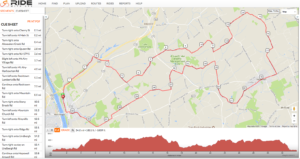
You'll also want to recon the rides you plan to do during your training camp. If you don't you'll probably get in a little bit over your head. But coach, I don't live around where the training camp is going to be! That's fine, in this day in age we have access to numerous tools that let us evaluate our potential routes. Between using Strava's heat maps and segment explorer and using RideWithGPS to plan your rides, you have no excuse for not knowing what your ride will be like.
Along the same lines, don't blow yourself up on day 1 of your training camp. This is especially true if you're planning on a longer training camp. Be sure to recon your rides and expect to do some intensity on day 1, but don't kill yourself. Burning yourself out on the first day will ensure the rest of the camp is not nearly as effective as it should be.
Finally, if you've got some downtime or some recovery rides planned, you can use those rides to drill skills. Cornering drills, neuromuscular efficiency work and handling drills can fill up recovery rides and double the amount of training you're truly getting.
Now that you've got the tools you need to build a pro training camp, get out there and start planning! If you're needing some help getting your training program in order, check out my downloadable training plans. If you need help planning your season, grab my free season planning worksheet and start planning your goals, training and cycling training camp!
Don't forget to support the podcast by leaving a review on iTunes or doing your shopping through one of my affiliates!

